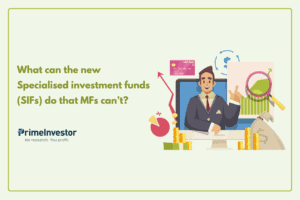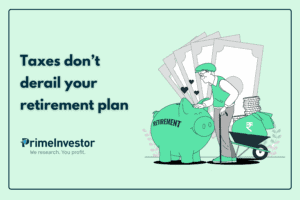In any portfolio that features equity funds, the long-running debate is whether one should go for active or passive funds. We, on the other hand, have held that a portfolio can well feature both active and passive funds using each where it does best. Of late, we have also been of the opinion that there are some categories where you should have passive funds if you are to keep returns up – even if you hold outperforming active funds.
Why? Because our analysis of return patterns across categories point to the following trends in some key categories:
- Funds are finding it increasingly hard to beat their benchmarks. There are fewer funds now which are beating the index than a few years ago.
- The degree of the consistency with which funds beat the index has also been dipping; meaning that funds are becoming more prone to sliding below the index. Even earlier steady performers are starting to show lower consistency.
- The margin of outperformance in categories has been reducing, and even the best performer outstrips the index by a smaller margin now than earlier.
What these trends show is that in these key categories, it would be better to hold a passive fund to maintain returns whether alone or in addition to active funds. Note that when we say passive, here, we mean indices weighted by market cap only – the plain vanilla Nifty 50, Sensex, Nifty 100, and so on.

Increasing inconsistency in large-caps
The first category where passive options are becoming a necessity is the large-cap category. Let us take a key metric – the consistency in outperformance of large cap funds over benchmark Nifty 100 TRI. This metric will tell you what proportion of times a fund has outperformed the index. A high proportion is indicative of consistent outperformance.
For this purpose, we took the rolling 1-year and 3-year returns of funds over different time frames (all rolled for preceding 3 years) as given below in the table.
What this shows is two things – one, funds are unable to beat the Nifty 100 TRI more than half the time across timeframes. That means they languish the index more often than not. Two, funds are unable to sustain any improvement. The 2020-2021 period did see funds pull back from extremely poor performance. Their ability to contain downsides worked in their favour in the 2020 crash and this helped in their outperformance for a while. But as markets climbed higher, funds began to slip again. This inability to hold on to outperformance has meant that the longer-term return consistency remains poor.
Consider yesteryear stalwart Aditya Birla SL Frontline Equity. This fund’s 1-year returns trailed the Nifty 100 TRI by as much as 5-7 percentage points in earlier years such as 2019. It narrowed this to 1-2 percentage points by early 2020 and even began beating the index by 2021. But this outperformance in turn shrunk and the fund now is back to trailing the index. The same holds with many other funds as well.
If you were to look at funds’ 3-year performance back in 2017, you would find that about 8 in every 10 were better than the Nifty 100. Now, it’s just about 3-4 in every 10 that does better.
You could argue that averages mask outliers. And you would be correct. However, what we’re also observing from return trends is that even the top performers are starting to wear down. Consider Axis Bluechip, which was part of Prime Funds.
In our large-cap recommendations, we went for funds that followed a differentiated strategy as, given the limited universe, ‘stock discovery’ is a tough ask. The fund’s concentrated holdings in outperformers gave it an edge. But its excessive cash calls and stock choices gone awry has sent the fund’s 1-year return significantly below the Nifty 100 TRI. That has affected its longer-term returns as well.
Older investors may remember that Axis Bluechip also went from outperformer to underperformer back in years such as 2017 before blossoming out in later years. However, this lack of stability can be troubling, and hard to take a call on whether or not to continue investing. Other top performers, too, such as Canara Robeco Bluechip or Baroda BNP Paribas Large Cap are starting to turn recent underperformers though it has not affected long-term returns.
This apart, for funds that are still doing well, the margin of outperformance has shrunk to a large extent. The biggest outperformer in years such as 2018 was a good 6-7 percentage points above the Nifty 100, whether you take 3 year returns or even 5 years. Now, that margin is just about 2-3 percentage points.
The takeaway here is this – in the large-cap space, there is a lack of steady performance by active funds. The inability to hold on to performance means that using active funds alone can hurt in terms of opportunity loss. Therefore, adding an index fund that tracks the Nifty 50, the Nifty 100 or the Sensex is necessary to keep returns in line with markets. Our readymade Prime Portfolios use passive options where necessary in the large-cap space.
Lack of options in large-and-midcaps
The large-and-midcap category is not essential in a portfolio. It plays the role of a higher-returning option without upping risks that come with going entirely into mid-caps. It can also be less aggressive than the multi-cap category. It suits those who are looking for a midway ground between flexicaps and midcaps. The category is a new one that SEBI introduced in its 2018 re-categorization. Funds here, therefore, don’t have much of a history.
But based on what returns these funds have delivered so far, there isn’t much choice to be had. The average performance, in terms of consistency in beating the benchmark, mirrors that of large-caps. Whether on a 3-year or 1-year rolling return basis, the proportion of times funds beat the Nifty Large Midcap 250 is less than 50%. This figure has stayed put over several quarters, indicating that there’s no real improvement in these funds’ performance. Less than 5 in 10 funds appear to beat the index at any point. Essentially, in this category, it is hard to find an outperformer.
The chart below shows the average rolling 1-year return of the category, along with the best 1-year return and the Nifty LargeMidcap 250. As you can see, the category on an average is very rarely better than the index. Even the best return delivered does not exude much confidence.
Along with this, the few outperformers there are now seem to be faltering. The seemingly undefeatable Mirae Asset Emerging Bluechip, for years the most consistent performer has slipped significantly below the Nifty Large Midcap 250 since March on a 1-year basis in turn affecting longer-term returns. This can be attributed to the midcap rout as we noted in our quarterly Prime Funds review. The other topper Axis Growth Opportunities has also dropped in recent times. The earlier star performer Invesco India Growth Opportunities is yet to recoup. But given that these were among the few worthwhile choices in the category, looking for active alternatives in the category may be avoidable.
The category is a new one, as we noted above. While trends may change down the road as they fine-tune their strategies, current trends suggest that using pure mid-cap funds or more aggressive funds from categories such as flexicap or focused along with passive options, may work better.
The takeaway here is this – funds in the large-and-mid category have struggled to consistently beat the Nifty Large Midcap 250. With the recent launch of an index fund tracking this index, using this passive fund would be the preferable route to play this space in addition to the active funds you may hold.
Other categories hold up
The two categories above display clear trends of the passive option being a good choice. In the other categories, while there certainly are laggards, there are plenty of outperformers as well.
The category that could come closest into question is the flexi-cap category, where about 5 in every 10 funds are not able to do better than the Nifty 500 TRI, and where some of the earlier strong performers are struggling. But the range of funds here is quite vast, which can make direct comparisons tricky. For example, funds such as Kotak Flexicap, Union Flexicap or Canara Robeco Flexicap are more large-cap by nature making the Nifty 500 index somewhat of a stiff benchmark.
A watch on how the trends in this category play out is needed to conclusively determine than the passive route could be advantageous. Besides, if you’re looking for funds that invest across market capitalisations, choices include the focused and value categories, as well as the newly-minted multicap category. Together, these offer enough scope to invest in consistent outperformers. With Prime Funds (our list of recommended funds), we consider all of these before providing our choices.
A Nifty 500 index fund will be a suitable substitute in the flexicap space if you do not wish to have the hassle of checking on performance.
Why market-cap indices in passive funds
In all index fund options mentioned above - the Nifty 50/ Nifty 100/ Sensex for the moderate risk exposure, and the Nifty Large Midcap 250 and the Nifty 500 for more aggressive exposure – all are market-cap indices only.
In our view, indices weighted by market capitalisation are the best core portfolio option. Market-cap weighting ensures that rising stocks get higher weights and vice versa, meaning that you go exactly with market mood.
There are fancier passive funds, which track indices built on these main indices using different factors or metrics – low volatility, momentum, quality and so on. These are not substitutes for active funds. They are best used as diversifiers or add-ons, as they work in some market cycles and not in others. Most of these are also new indices and historic data is not entirely reliable as performance indicators. This article we wrote earlier will have a bigger explanation why – the article discusses ETFs but the arguments hold for index funds as well.
You can look for passive equity index fund options in Prime Funds – under both aggressive and moderate risk categories.






14 thoughts on “Is it time to add passive funds to your portfolio?”
Hello, your ready-made portfolios feature “UTI Nifty 50” & “UTI Nifty Next 50” Index funds. However, I already have investments in “ICICI” Nifty 50 and Nifty Next 50 funds. Since these are passive funds anyways, is there any need for me switch my current investments from ICICI to UTI? What about future new investments?
No, there’s no need to switch. You can continue with the ICICI funds. – thanks, Bhavana
The best thing for youngsters is to invest in a basket of Index funds or ETF’s and enjoy their life. Focus on career progression & hobbies. Leave it index to make your money work for you. Done that for children.
Reaffirms my conviction.
Passive funds are passive in the sense no fund manager adjusts their stocks ratio. But, how passive we (the investor) should be when investing in them. For example, if the market is going down, does it make sense to book some profit and reinvest it after a few months/weeks? (I am not talking about small ups and downs here. Only when something significant seems to happen.)
Two things: in market corrections, if you have surplus deploy. If you find it hard to convince yourself on whether the correction is enough or not, a simple approach is rebalancing. Rebalancing as a strategy will also help take off profits. Please read about it here: https://www.primeinvestor.in/varsity/how-to-rebalance-your-portfolio/ thanks, Vidya
Any Recommendations on Nifty Large Midcap 250 index at Prime ETFs page?
& Also would like to check if we can get the rolling returns of all major indices ,( it would be nice to have it )?
There is no ETF tracking the LargeMid 250 as of now. But given the volume of NFOs, it may not be too long 🙂 Please check Prime Funds for the fund recommendations. Noted your point on the index return. – thanks, Bhavana
You have hit the nail on the head. Even Warren Buffet has said that he would invest his 90% of his largess for his wife in Vanguard 500 and balance in liquid or short term bond fund.
All active funds are humbug, should be avoided like a plague .
Thank you. In the midcap space, between kotak emerging equity vs nifty midcap 150, which is a better long term choice in your opinion?
Both are in our recommendation list 🙂 If you do not want the need to track performance, go for the index fund. Else, as noted in the article, the midcap space continues to offer good options. – thanks, Bhavana
Hi, thanks for the write up. If possible, please publish an analysis comparing the performance/rolling returns of mid and small caps vs their respective indices, with say a 5 year holding period. Thanks
Are 1-year and 3-year rolling returns the correct data to use when comparing equity funds?
Should you be comparing rolling returns data over longer time periods (at least minimum of 7 years) appropriate for an equity investment?
How do active funds fare against passive funds based on 7-year, 10-year and 15-year data? This is the time frame that an investor would want to look into when deciding between an active and passive fund (given both are equity instruments).
Normally, yes, 1 year returns are too short for equity funds. But it’s useful to identify trends in performance – too long a period will have a bias towards the past that’s no longer relevant. There are plenty of funds where if you look at very long term returns will be fine, but in reality have been doing poorly in recent times. This apart, given that many funds are new, and that many funds have seen change in category in the past 5-6 years, very long periods are also not relevant. The shift in the ability to funds to do better than the index is better seen through shorter-term periods…but even if we take 5-year returns the lack of performance still holds in large-caps at least. As we have said in the post, if you’re going only active in those categories, it’s better to add index funds to compensate for the instability in performance. – thanks, Bhavana
Comments are closed.